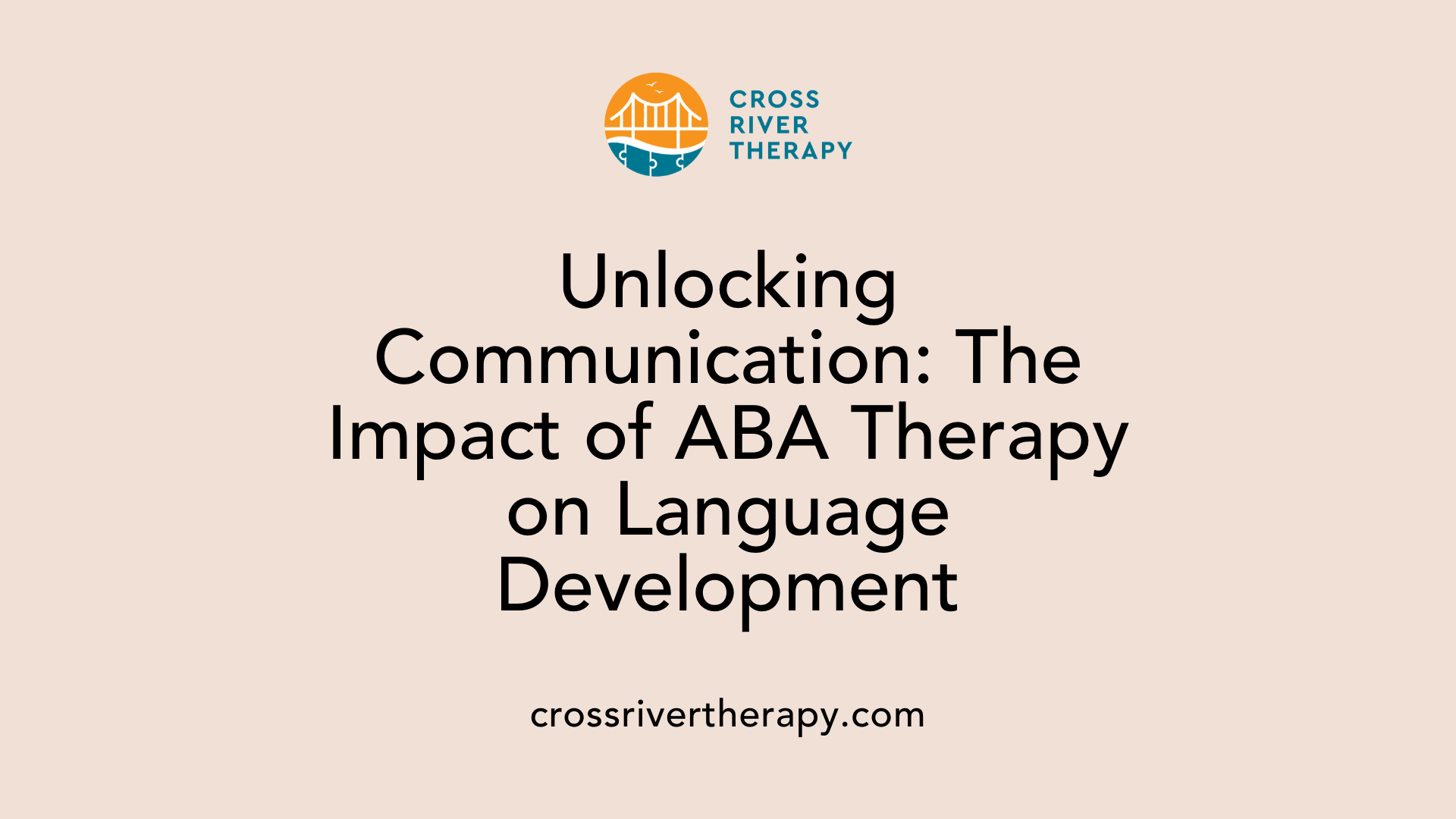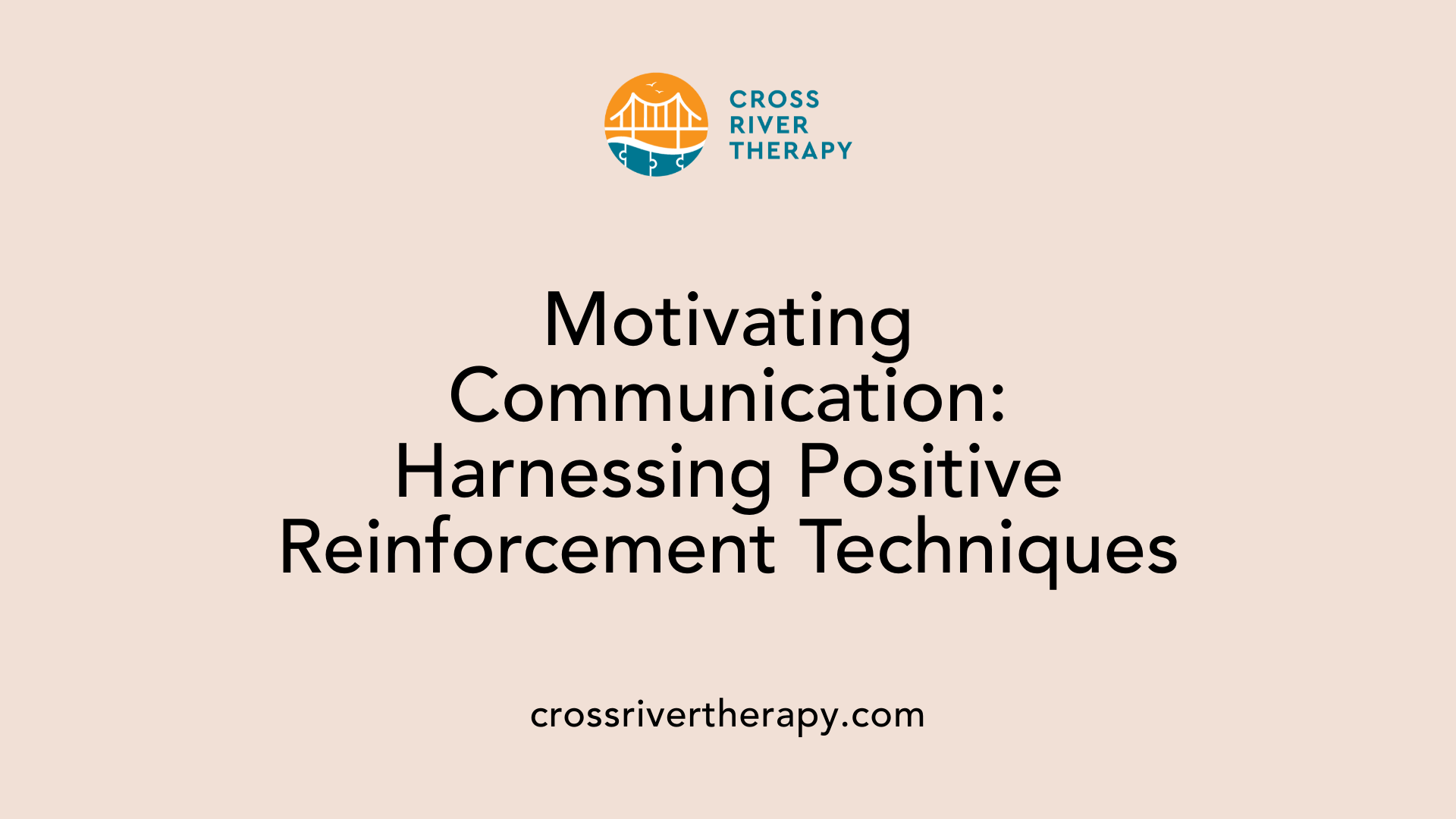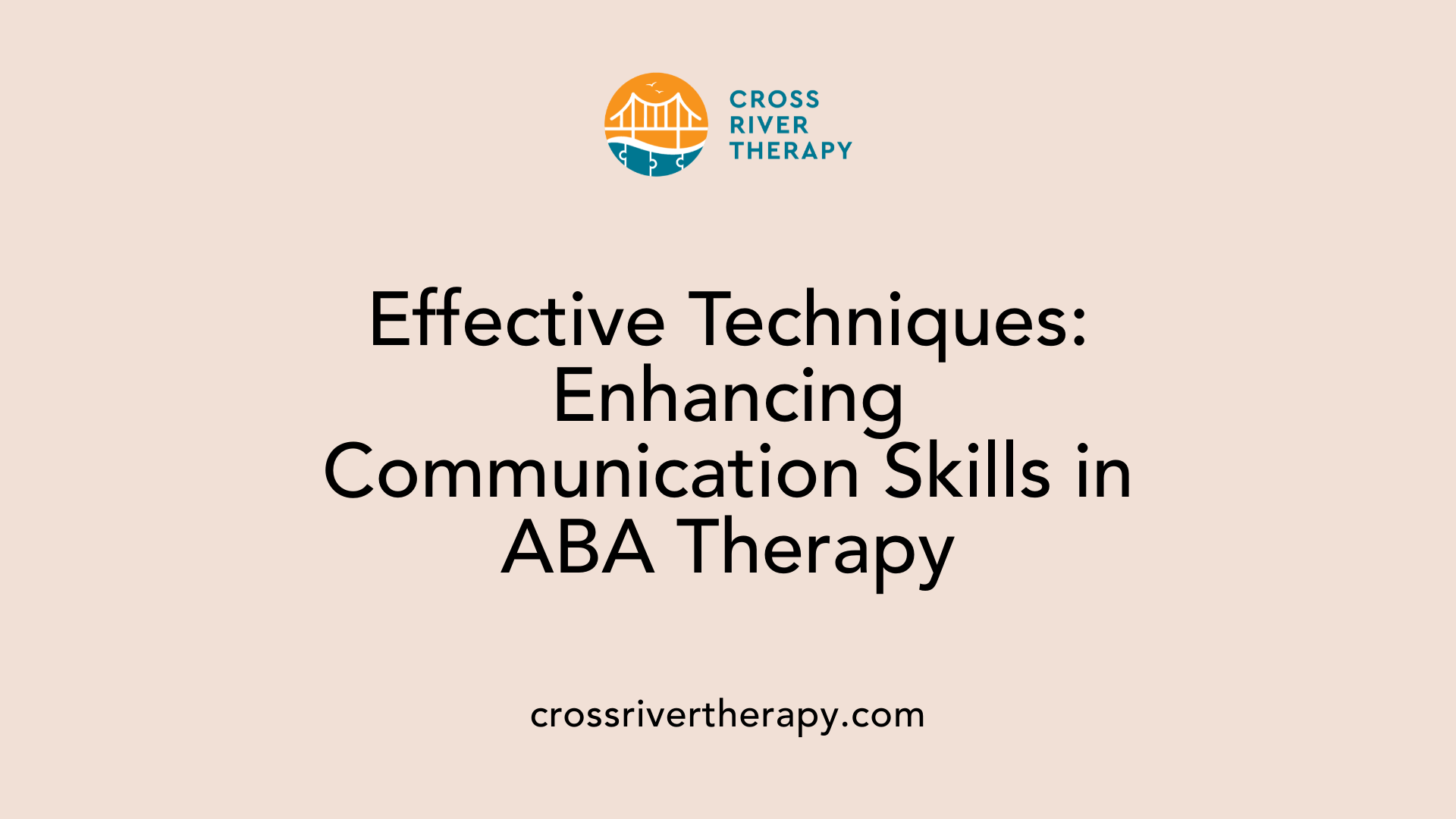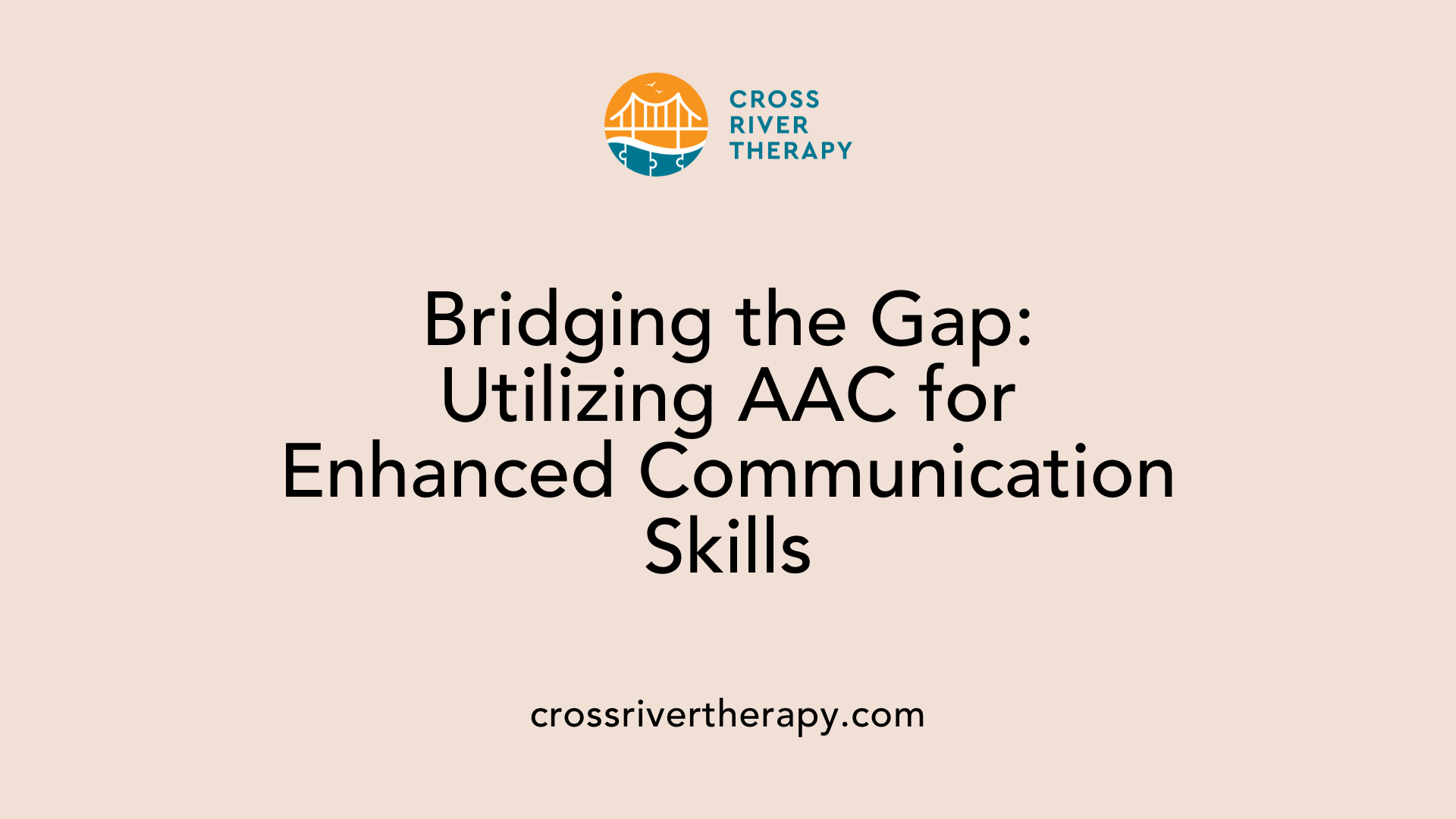How ABA Therapy Encourages Children to Build Strong Communication Skills
Empowering Communication through ABA Therapy
Understanding the Importance of Communication Skills
Communication is a fundamental aspect of life, especially for children with autism spectrum disorder (ASD) who often face unique challenges in this area. Applied Behavior Analysis (ABA) therapy stands out as an evidence-based approach dedicated to enhancing communication skills in such children. This method employs structured strategies to promote both verbal and non-verbal communication, serving as a crucial tool for fostering their development and independence. Through ABA, children with ASD learn to express themselves more effectively, develop social relationships, and become active participants in their communities.
Building Communication through Expressive and Receptive Language

How does ABA therapy aid in language development for children with autism?
ABA therapy plays a transformative role in enhancing language development for children with autism. The therapy is grounded in evidence-based interventions tailored to address specific communication challenges such as delayed speech and echolalia.
Through structured methodologies, ABA therapy effectively promotes expressive language skills, allowing children to convey their thoughts and feelings. This is achieved by using techniques like positive reinforcement, which rewards children for successful communication attempts, thus encouraging them to practice more.
Notably, early intervention with ABA therapy proves crucial; studies demonstrate that children who receive therapy at a younger age tend to show significant improvement in their speech and communication skills compared to those who start later.
Moreover, the inclusion of parents in the therapeutic process amplifies the effectiveness of ABA strategies, as parents can consistently reinforce learned skills at home. This consistent practice, coupled with the motivation derived from positive reinforcement, gradually builds a child’s confidence in their communication abilities.
Integrating ABA with other therapeutic approaches such as speech therapy or AAC methods can also provide additional support, further enhancing these vital communication competencies. Overall, a multifaceted approach not only fosters language skills but also prepares children for better social interactions, creating a pathway to more fulfilling communication experiences.
The Role of Positive Reinforcement in Communication Enhancement

What are some simple ways to help autistic children improve their communication skills?
To improve communication skills in children with autism, positive reinforcement plays a vital role. This technique involves rewarding children for effectively using communication skills, which encourages them to continue practicing. By implementing strategies like praise or preferred activities when children communicate successfully, therapists foster motivation and engagement.
Improving motivation and engagement
Children often respond well to positive reinforcement as it helps them associate communication with favorable outcomes. Engaging activities can be utilized to keep the child focused and interested, making learning enjoyable. For instance, when a child practices asking open-ended questions, providing immediate feedback through praise reinforces their efforts.
This approach can also be customized through the use of the child’s interests. Integrating specific hobbies or favorite topics into communication activities can enhance their willingness to participate.
Real-life application of skills
In real-life contexts, using prompts and visual aids can reinforce learning. Techniques like role-playing scenarios allow children to practice their skills in safe environments. By creating opportunities for communication during play or using alternative communication methods—like gestures or AAC devices—children can express their needs more effectively.
Moreover, keeping instructions clear and manageable assists in minimizing confusion, thereby making it easier for children to engage and communicate. This combination of structured reinforcement and practical applications significantly enhances communication skills, empowering autistic children to connect and thrive socially.
Techniques Used in ABA Therapy for Communication Improvement

Role-Playing
Role-playing is an interactive technique used in ABA therapy to enhance communication skills. Children are placed in various social scenarios where they can practice initiating conversations and interpreting social cues. This method helps them understand norms, such as making eye contact and responding appropriately during exchanges. The use of role-playing exercises allows children to rehearse social interactions in a safe environment, promoting confidence and skill development.
Modeling
Modeling involves demonstrating desired behaviors for children to observe and imitate. In the context of communication, therapists might model effective ways to express needs or engage in conversations. By watching their therapist or peers perform these behaviors, children learn both verbal and non-verbal communication cues, such as body language and facial expressions. This approach not only teaches technical skills but also reinforces the social aspects of effective communication.
Prompting
Prompting is a structured technique that guides children toward desired communication behaviors. It involves providing hints or cues to elicit responses, helping children learn how to express themselves in various contexts. For instance, a prompt may involve giving the first word of a sentence or asking leading questions to encourage communication. This gradual support ensures that children can practice and build confidence in their communication skills over time.
| Technique | Description | Purpose |
|---|---|---|
| Role-Playing | Interactive method where children practice social scenarios and conversations | Enhances understanding of social norms and cues |
| Modeling | Demonstrating desired communication behaviors for children to imitate | Teaches effective ways to express thoughts and feelings |
| Prompting | Providing cues or hints to guide children's communication efforts | Supports skill acquisition and builds confidence |
ABA therapy implements these techniques along with various interventions to create a supportive environment that fosters effective communication skills in children with autism. Regular assessment of progress also ensures that these methods are tailored to each child's unique communication goals.
The Importance of Non-Verbal Communication in Social Skill Development

Understanding Body Language
Non-verbal communication is a vital component of how children with autism spectrum disorder (ASD) engage socially. Body language encompasses various gestures and movements that convey messages without words. In ABA therapy, children learn to recognize and interpret these cues, enhancing their ability to engage effectively in conversations.
Interpreting Facial Expressions
Facial expressions are another critical aspect of non-verbal communication. They provide emotional context to interactions. ABA therapy emphasizes teaching children how to read these expressions, allowing them to respond appropriately during social exchanges. This skill fosters empathy and enhances their ability to connect with others on a personal level.
Improving Social Interactions
By focusing on both body language and facial expressions, ABA therapy significantly boosts social interaction skills. Children practice through role-playing exercises, which help them apply learned cues in real-life situations. This practice encourages spontaneous communication and makes interactions more natural, ultimately reducing social isolation and promoting friendships.
Verbal Behavior Therapy and Its Impact on Functional Communication
Mands and Tacts
Verbal Behavior Therapy (VBT) plays a pivotal role in helping children with autism spectrum disorder (ASD) enhance their communication skills through its focus on different operants. Mands, which are requests, allow children to express their needs and wants effectively. On the other hand, tacts, or labels, help children communicate the names of objects, actions, or events. By actively teaching these components, VBT aids in building a functional language repertoire.
Enhancing Expressive Communication
The structured nature of VBT assists children in expanding their vocabulary and improving their sentence structure. This systematic approach not only promotes verbal expression but also cultivates confidence in social interactions. Children learn to articulate their thoughts and feelings more precisely, making daily communication more effective and meaningful.
Importance of Functional Skills
Developing functional communication skills is crucial as it helps children with ASD navigate social situations, gain independence, and reduce frustration. By replacing challenging behaviors with appropriate communication techniques, VBT empowers children, allowing them to express themselves clearly. This enhancement in communication directly influences their ability to engage in conversations and build relationships with peers and caregivers, fostering a deeper understanding of the world around them.
| Topic | Description | Importance |
|---|---|---|
| Mands and Tacts | Teaching requests and labels for effective communication | Essential for initiating interaction |
| Enhancing Expressive Comm. | Expanding vocabulary and improving structure | Vital for articulate self-expression |
| Functional Skills | Replacing inappropriate behaviors with communication | Leads to independence and engagement |
Through VBT, children not only improve their ability to communicate but also gain vital social skills that support their overall development.
Augmentative and Alternative Communication (AAC) in ABA Therapy

Use of PECS and SGDs
Augmentative and Alternative Communication (AAC) methods play a vital role in ABA therapy, providing support for children who have limited verbal communication abilities. Two popular AAC tools are the Picture Exchange Communication System (PECS) and speech-generating devices (SGDs).
- PECS enables children to use pictures to express their needs and desires, facilitating early communication skills.
- SGDs allow individuals to generate speech through technology, bridging the gap when verbal expression is challenging.
Supporting Non-Verbal Children
ABA therapy incorporates AAC methods to foster communication development in non-verbal children. By utilizing visual supports and technology, children can learn to convey messages effectively. This approach not only aids in expressing needs but also enhances their social interactions through improved functional communication.
- Reduces frustration associated with inability to communicate.
- Promotes engagement in social situations by providing alternative methods to express thoughts.
Integration with ABA
AAC methods are seamlessly integrated into ABA therapy to create individualized communication plans. Tailored strategies ensure that interventions meet the unique needs of each child.
- Ongoing assessment is conducted to evaluate the effectiveness of AAC tools.
- Positive reinforcement encourages consistent use of these methods, enhancing motivation and learning.
By incorporating AAC, ABA therapy significantly improves the communication skills of children with autism, enabling them to participate more meaningfully in their environments.
Structured Methodologies in ABA Therapy for Language Development
Discrete Trial Training
Discrete trial training (DTT) is an effective technique within ABA therapy, focusing on teaching communication skills systematically. This method breaks down complex tasks into smaller, manageable steps. Each trial involves a clear instruction, a child's response, and immediate feedback, promoting learning through repetition.
Incremental Learning Methods
Incremental learning in ABA therapy helps children gradually build their communication skills. Therapists set specific, achievable goals tailored to each child's current abilities. As children master one skill level, they progress to more complex tasks, enhancing their confidence and communication effectiveness over time.
Evidence-Based Approaches
ABA therapy is rooted in evidence-based practices that demonstrate effectiveness in improving communication among children with autism. Techniques like positive reinforcement motivate children to communicate more spontaneously. Collaborating with speech-language pathologists, therapists ensure approaches are well-integrated, maximizing each child's development potential.
| Methodology | Description | Benefits |
|---|---|---|
| Discrete Trial Training | Breaks tasks into small, manageable steps | Enhances learning through structured repetition |
| Incremental Learning | Gradual skill building with tailored goals | Boosts confidence and communication effectiveness |
| Evidence-Based Approaches | Utilizes proven techniques and collaboration | Maximizes developmental potential and ensures effective interventions |
The Role of Collaboration in Enhancing Communication Skills
Interdisciplinary Approach
Collaboration among professionals is crucial in the context of ABA therapy. By integrating insights from various specialties such as speech-language pathology, occupational therapy, and psychology, therapists can devise individualized plans tailored to each child's communication needs. This interdisciplinary approach ensures that all aspects of a child's development are considered, leading to more effective communication interventions.
Parental Involvement
Parents play a pivotal role in their child's communication development. Their involvement in ABA therapy helps reinforce skills learned during sessions. Families provide insights into their child’s everyday communication challenges and strengths, allowing therapists to adapt strategies that work best in real-life situations. This collaboration between parents and therapists fosters a supportive environment conducive to skill transfer into natural contexts.
Continuous Assessment
Ongoing assessment is essential to measure progress and refine goals in ABA therapy. Regular evaluations help determine which strategies are effective and which require adjustment. This continuous feedback loop not only tracks improvements in communication skills but also allows for timely interventions that cater to the changing needs of the child, ensuring the therapy remains relevant and supportive.
| Aspect | Importance | Method of Collaboration |
|---|---|---|
| Interdisciplinary | Comprehensive care | Team meetings among professionals for cohesive planning |
| Parental Involvement | Enhanced transfer of skills | Regular updates and training sessions for parents |
| Continuous Assessment | Tailored interventions | Routine evaluations and strategy adjustments based on progress |
Incorporating Natural Environments in Communication Learning
Real-Life Context Application
Integrating natural environments into ABA therapy allows children with autism to practice communication skills in settings they encounter daily. For instance, grocery stores or parks serve as excellent venues for implementing learned skills. Within a familiar context, children can better understand the relevance and utility of their communication efforts.
Encouraging Spontaneity
Using natural environments encourages spontaneity in communication, which is crucial for meaningful interactions. The therapy establishes opportunities for children to engage in conversations without prompts or structured settings. This helps bridge the gap between learned skills and real-world application, enhancing both confidence and competence in social exchanges.
Role of Interactive Play
Interactive play is a vital component of communication learning in ABA therapy. It allows children to not only use verbal and non-verbal cues but also understand social dynamics through cooperative activities. Role-playing during playtime helps solidify concepts such as sharing, turn-taking, and emotional expression, which are significant for developing cohesive social communication skills.
Group Sessions and Peer Interactions in ABA Therapy
Facilitating Social Communication
Group sessions are a vital component of ABA therapy, providing children with the opportunity to practice social communication skills with peers. These guided interactions encourage children to engage in conversations, allowing them to apply what they have learned in a real-world setting. Within these sessions, children learn how to initiate discussions, take turns, and express their thoughts more effectively.
Building Friendships and Collaborative Play
By participating in organized group activities, children can build meaningful friendships. Interactions in a supportive environment foster collaborative play, where children learn to work together, share ideas, and support each other in learning. This not only enhances their social skills but also promotes emotional connections that can lower feelings of isolation.
Structured Social Scenarios
ABA therapy employs role-playing exercises within group sessions to simulate various social scenarios. These structured activities prepare children to interpret social cues, like body language and facial expressions, essential for effective communication. By practicing these scenarios, children gain confidence and are better equipped to handle real-life social interactions outside of therapy.
Understanding the Impact of ABA Therapy on Overall Development
Benefits beyond communication
ABA therapy does more than improve communication skills in children with autism spectrum disorder (ASD); it enhances various aspects of their lives. For instance, children often show increased ability to engage with peers, leading to better friendships and social networks. This social growth is crucial, as effective communication lays the groundwork for building relationships.
Gaining independence
Through structured learning and positive reinforcement, ABA therapy promotes independence in children. By mastering essential life skills, such as self-care and personal responsibility, they become more capable and confident. For instance, the ability to express needs verbally reduces reliance on others and fosters self-sufficiency.
Reducing challenging behaviors
A significant outcome of ABA therapy is the reduction of challenging behaviors. By teaching functional communication skills, children learn to express their needs appropriately, minimizing frustration and the potential for outbursts. As a result, behavioral issues decrease, allowing for more peaceful interactions at home and in educational settings. This transformation supports overall emotional well-being and enhances their quality of life.
| Aspect of Development | Impact of ABA Therapy | Examples of Improved Skills |
|---|---|---|
| Communication Skills | Enhanced verbal and non-verbal communication | Increased vocabulary and clearer expression |
| Independence | Improved self-care skills | Ability to dress, feed, and care for oneself |
| Social Interaction | Better peer relationships | Initiating conversations and playing cooperatively |
| Reduction in Challenging Behaviors | Fewer outbursts due to improved communication | Expressing needs instead of tantrums |
The Transformative Power of ABA Therapy
ABA therapy's structured and scientifically backed approaches significantly improve communication skills in children with autism. By focusing on both verbal and non-verbal aspects, integrating alternative communication methods, and fostering social interactions, ABA therapy provides children with invaluable tools to express themselves, engage in meaningful interactions, and navigate their world more confidently. As children develop stronger communication skills, they gain more independence and experience improved relationships, underscoring the transformative impact of ABA therapy on their lives.
References
- Enhancing Communication Skills With ABA Therapy
- How ABA Therapy Can Improve Communication Skills in Children
- Using ABA Therapy to Develop Communication Skills in Children ...
- How ABA Therapy Enhances Social Skills in Children with ASD
- ABA Therapy Enhance Communication Skills in Children | PMT
- How ABA Therapy Helps Improve Communication Skills in Kids
- Does ABA Therapy Help With Speech? Yes. Here's Why
- Resources - Blue ABA
- ABA Therapy



